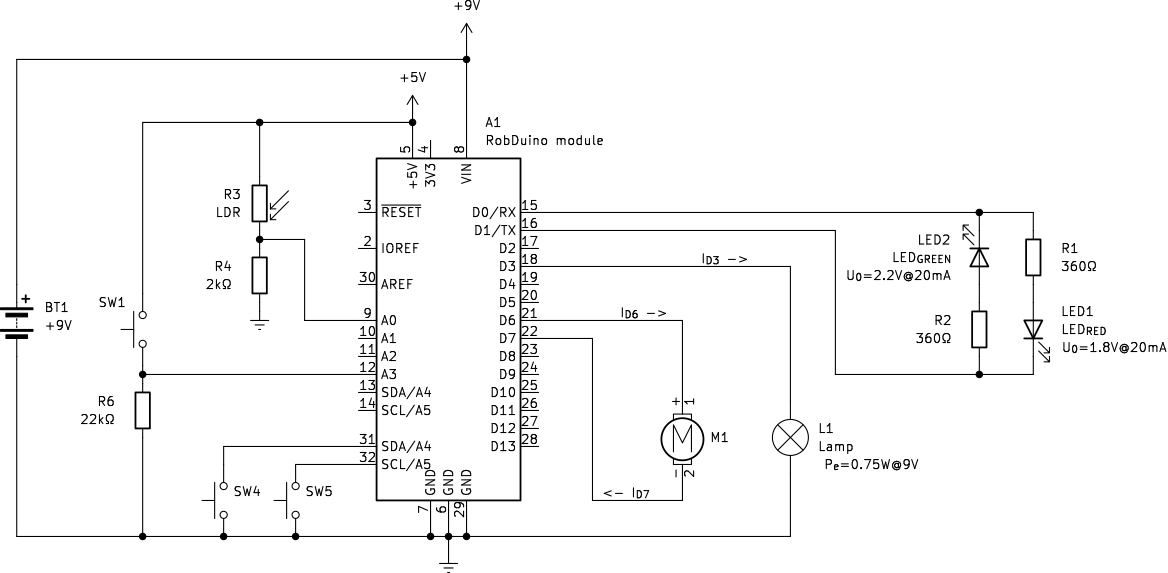Kirchhoff’s Current Rule
Kirchhoff’s Current Rule, also known as the first Kirchhoff law rule, states that the total current entering a junction in a circuit equals the total current leaving the junction. This law is based on the principle of conservation of charge and is expressed with [@eq:kcl]:
\(I_{x_1} + I_{x_2} + ... = I_{y_1} + I_{y_2} + I_{y_3} + ...\){#eq:kcl}
where:
- electrical currents with index $I_x$ are entering currents and
- currents with index $I_y$ are leaving junction currents.
We will explain the Kirchhoff’s current rule on the same example shown in [@fig:RobDuino_Basics_Electronics_KCL]
 {#fig:RobDuino_Basics_Electronics_KCL}
{#fig:RobDuino_Basics_Electronics_KCL}
Practical Example in Robotics:
Imagine a robotic hand with multiple sensors (e.g., touch sensor and light sensor) connected to a single microcontroller. If the sensors draw 0.23 mA (when $SW_1$ is closed) and 1.0 mA, and they are all connected to the same power supply junction, the total current entering the junction is:
\(I_{tot} = I_{tch} + I_{light} = 0.23mA + 1.0mA = 1.23mA\){#eq:i_tot}
This information is critical for designing the power distribution network of the robot, ensuring that the power supply can handle the total current draw.
Questions
- What is the total current of actuators (motor, light bulb, LEDs) when they are all on?
- Current into input pin $A_0$ is approximately $I_{A_0} = 20 nA$. Compare this current to other two currents at the middle junction in the light sensor. Can it be ignored?